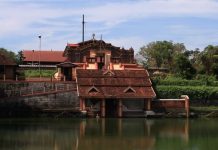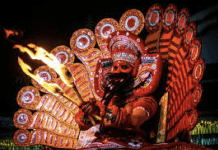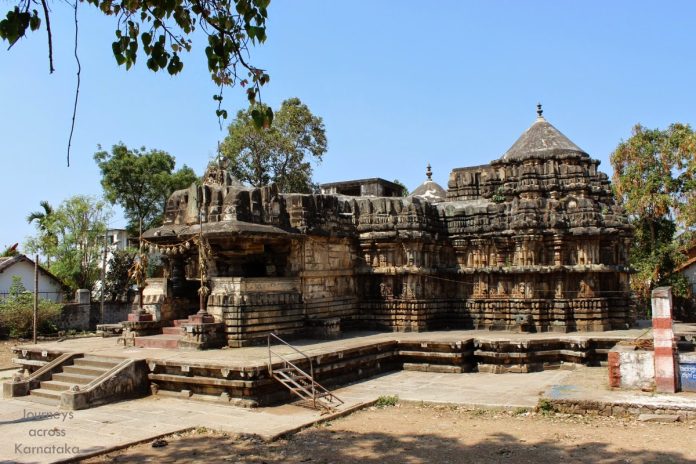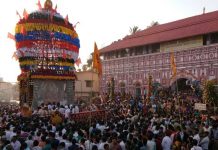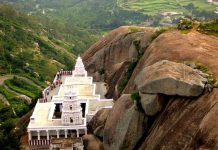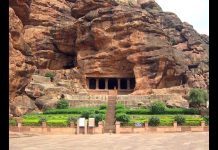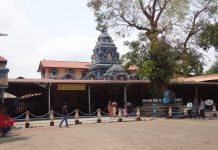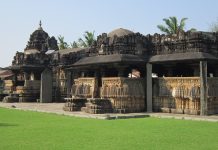Lakshmi Narasimha Temple, dedicated to an incarnation of the Hindu god Vishnu, was built by the Hoysalas in the early 13th century. It is located in Bhadravati, an industrial town and taluk in the Shimoga District of Karnataka state, India.
History and Legend of Lakshmi Narasimha Bhadravati Temple
The Lakshmi Narasimha Temple of Bhadravati is the bearer of the rich culture and traditions present in this ancient Town.
- There is a popular myth related to the formation of the small town of Bhadravati. It is believed that here, Lord Vishnu saved Bhudevi in the avatar of Varaha, that is, the boar, Goddess Prithvi. She was taken captive under the sea by the demon Hiranyaksha. According to the Holy Scriptures, when the Varaha raised the earth with its two tusks, the Tunga River and Bhadra were built. The place was previously known as Benkipura.
- The temple is dedicated to Lord Narasimha, an avatar of Lord Vishnu. The temple includes other images of Hindu deities, such as Sri Krishna, Lord Purushottam, Lord Ganesha, and Goddess Sharadamba.
- The Lakshmi Narasimha Temple of Bhadravati is an 800-year-old temple. The sculptures of the temple also exhibit the daily lifestyle of the 13th century, along with the images of musicians and dancers.
- The temple was built by Sir M. Visvesvaraya & grandson of a famous Hoysala Emperor, Vishnuvardhana.
Significance of the Lakshmi Narasimha Temple Bhadravati
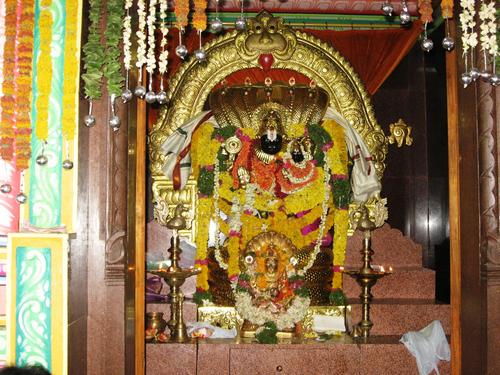
Some basic features of the Lakshmi Narasimha temple of Bhadravati are:
- The idol of Lord Narasimha is in a relaxed state, protecting his devotee Prahlada.
- The Lakshmi Narasimha temple comes in a triple form, known as Vimana. While one temple faces south, the other two face north and west.
- Soapstone has been used for the construction of the temple. If you touch the walls you feel a sensation of soap and the stone is really tender.
- There is a flagpole, known as dwajasthambam just in front of the temple.
- The temple stands on a raised platform, known as Jagati. This platform, approximately one meter high, was used by devotees for the bypass (pradakshin) of the temple. There is no designated route to Pardakshin temple in the form of Hoysala architecture.
- The Lakshmi Narasimha Temple of Bhadravati also has special pillars, known lathe pillars along with parapets. These shiny black pillars define the architectural style of Hoysala from the 11th and 13th century. The pillars of the lathe not only enhance the beauty of the temple, but also support the roof of the large temple.
- The inner wall of the temple is kept simple and flat, while the outer wall is star and constellation shaped, providing enough space and scope for decoration.
- The central hall of the temple is unique with now windows and is connected with the other sanctums.
- There is a slab in Kannada inscription at the temple which exhibits the construction details.
How to reach: Road, Rail and Air

- By Road: From Bangalore: All KSRTC buses that start from Bangalore to Shimoga stop here at Bhadravati. The journey will be around six hours. From Shimoga: To reach Bhadravati from here, you can either book a taxi or take a KSRTC bus. The journey may not be that comfortable but will be economical.
- By Rail: The railway line from Birur-Bangalore passes through this city. Apart from this many trains from Bangalore to Shimoga also stop at Bhadravati. Another option would be to catch a train to Birur and switching over to a bus/ train heading to Bhadravati.
- By Air: The nearest airport to Bhadravati is Hubli, located at a distance of around 170 km. There are daily flights to Hubli from Bangalore and Belgaum. There is also an option of using the Mangalore airport which is 180km away.



